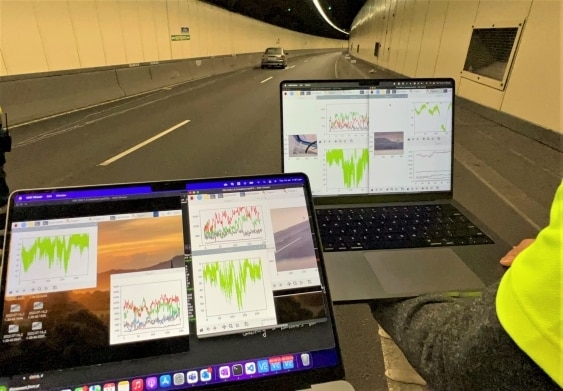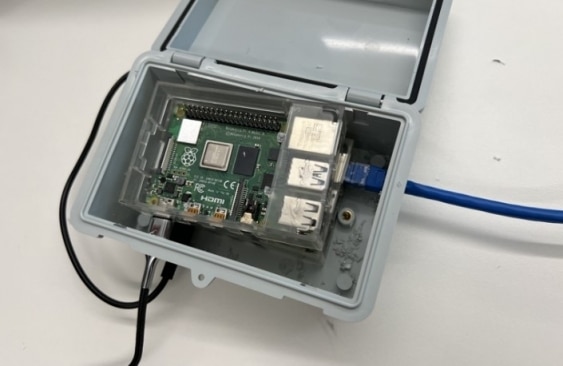
The team’s new fire detection system monitored a car fire during a planned test at the Sydney Harbour Tunnel. (Image Credit: Aruna Seneviratne.)
Conventional thermal imaging fire detection systems often detect safe levels of smoke or temperature changes, leading to false-positive readings. These readings usually occur due to a vehicle’s faulty exhaust pipe or a hot radiator. UNSW Sydney engineers created a Raspberry-Pi fire detection system that monitors variations in WiFi signals as they pass through high temperatures and smoke, potentially leading to life loss prevention. The Sydney Harbour Tunnel Company performed a controlled car explosion test with this technology to show its overall efficiency.
“It is basically relatively simple high school physics. What we have are a transmitter and a receiver, and we can monitor the radio signal as it travels through the air,” Professor Seneviratne says.“As the air temperature changes, so does its density, and that changes the signature of the reading when we receive the signal. In fact, we have experimentally demonstrated that these changes are strongly correlated with the rise or fall of temperature in the environment between transmitter and receiver.”
The team discovered “distinct patterns in data from radio signals” during a fire, and AI performed real-time environment analysis. Afterward, the low-cost system accurately determines if a fire causes atmospheric changes. It then sets off an alarm or activates a sprinkler system due to those changes.

The UNSW team can monitor WiFi signals moving through the air during a fire. (Image Credit: Aruna Seneviratne.)
“Smoke and different gases, such as carbon monoxide that can be produced in fire situations, also affect the density of the air and will give distinctive signatures on our readings. Specifically, these signatures are captured in the form of wireless channel information,” Seneviratne explains. “What we also add into the system is artificial intelligence to analyze all the data and compare to baseline readings to help determine if there is a real fire occurring.”
Working with Trantek MST, the tunnel’s mission-critical systems vendor, and Sydney Harbour Tunnel Company (tunnel owner/operator), the researchers performed a test on this new system. The demonstration involved using Raspberry Pi-based transmitters and receivers for environmental monitoring purposes while the car detonated and burst into flames. It operates by exploiting the WiFi waves’ different transmission frequencies called subcarriers. Then, it combines the environmental phenomena effects impacting the WiFi subcarrier frequencies and performs data processing, determining the highest sensitivity frequencies to help the analysis. Overall, the system processes and analyzes up to 1200 packets of data per second.

The system contains an array of Raspberry Pi-based transmitters and receivers to detect changes in WiFi signals caused by smoke and fire. (Image Credit: Aruna Seneviratne.)
The series of transmitters and receivers setup also helps to determine a fire’s zonal location, allowing quick and efficient responses from emergency services. In addition, the system has a more affordable price tag compared to thermal imaging cameras. “Existing [specialized] fire detection cameras can cost around $10,000 to buy, whereas our transmitters and receivers are $100 or even less,” Seneviratne notes.
“The other thing with cameras is that they need to be carefully maintained. The lenses need to be kept clean, and they often need to be properly aligned,” Seneviratne says. “With our system, the transmitters and receivers are just sending out a radio signal and there is very little maintenance required. Therefore, there is also a much lower cost to operating the system.”
Professor Seneviratne said their technology offers more confidence in automatic fire detection systems that can sometimes struggle to determine if it detects a fire or flickering neon light. According to the team, this system can be used in different environments, including a home, industrial settings, and high-rise buildings.
Have a story tip? Message me at: http://twitter.com/Cabe_Atwell
